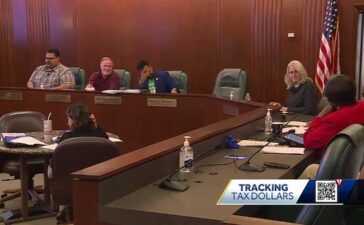Last year North Carolina state government spent a whopping $11.6 billion on K–12 public schools. Federal and local dollars added nearly $7 billion more. By a wide margin, K–12 public education is the largest expenditure in the North Carolina state budget.
Of course, financial resources are important. They keep the lights on and teachers in the classrooms. But so, too, is the system that provides money to our public schools and helps to determine the efficiency of how those resources are distributed and the efficacy of how they are used.
Considering the importance of that truth, it’s a wonder why North Carolina policymakers have long chosen generally to ignore how the state funds public schools.
It’s not because people haven’t tried. Over the last 15 years, various reports have criticized the system for its complexity, lack of transparency, lack of accountability, and unfair treatment of students and school districts. In 2016, for example, a state evaluation of North Carolina’s allotment system found that the system was so complex that it takes school business officers “two or more years” to understand how schools are funding their operations. Recommendations have been made to overhaul the teacher salary schedule, tie school allotments more to student enrollment, and study weighted student funding.
Even now, 15 years after the first report was issued, sadly not much has changed with how North Carolina funds public schools.
North Carolina continues to be one of a handful of states that funds public schools through a top-down, centralized way of distributing resources called a Resource Allocation Model. It relies on about 50 different allotments, each with its own funding formula and purpose. The funding model is complicated and inefficient and lacks accountability. Simply stated, school finance is the problem child of North Carolina state government.
In hopes of shedding light on the challenges of how North Carolina funds public schools, earlier this month the John Locke Foundation released “Funding Our Future: A Study of School Finance in North Carolina.” The report is built around key questions. Two of the most important are: Does our system of financing public schools ensure that students and schools are treated fairly and that schools get the resources they need when they need them? Is our system of financing public education transparent, accountable, and respectful of the growing number of public and private educational options?
The report provides plenty of evidence to help answer these questions. The report also highlights problems with some of the largest formulas, including Classroom Teachers, Children with Disabilities, and Low Wealth Supplemental allotments. Most notably, the report shows how North Carolina’s allotment system compromises the state’s ability to meet its constitutional obligation to provide an effective, fair, and uniform system of public education.
Thankfully, the report also provides solutions. It recommends that policymakers overhaul the current system in favor of one that ties funding to students, providing each district with a base amount per student along with additional funds for students with special needs. According to the authors, doing so is the best way to ensure that students and schools not only have the resources they need, but also that resources are distributed in an efficient and accountable manner.
So how does North Carolina accomplish those goals? The report provides case studies from Tennessee, California, and Indiana to point the way to successfully implementing a student-based funding system and provide useful lessons for policymakers in North Carolina.
Public schools continue to be North Carolina’s largest budget item and reflect North Carolina’s constitutional responsibility to educate children. “Funding Our Future” highlights how North Carolina’s system for funding public schools lacks efficiency, equity, and accountability and offers substantive recommendations and a clear path forward for meeting these challenges. Policymakers would do well to make it part of this most important discussion.

















